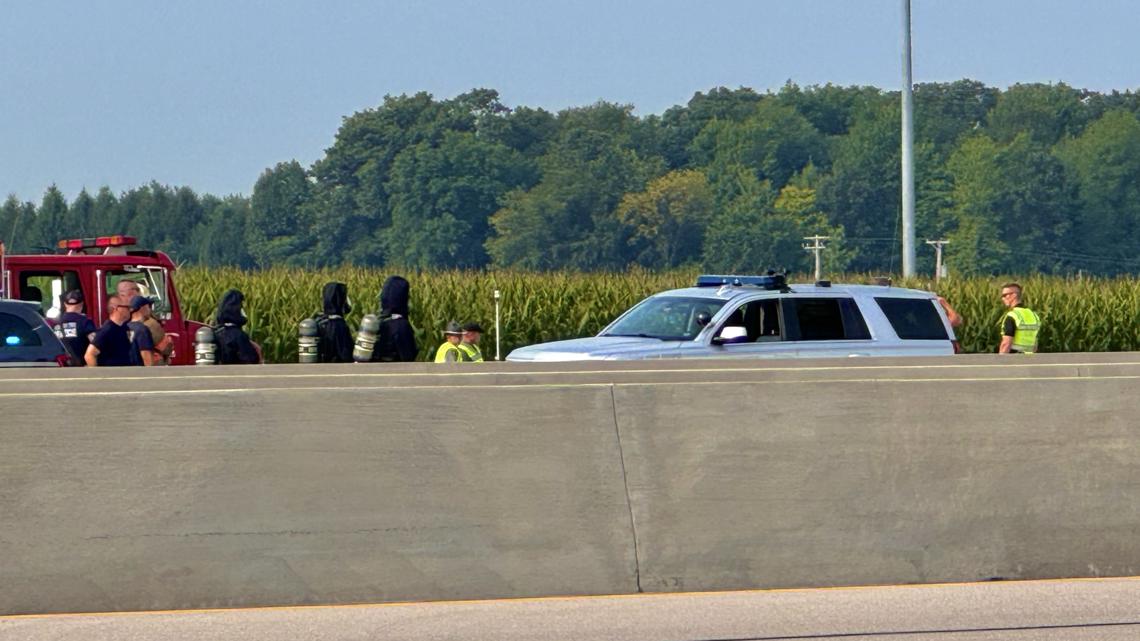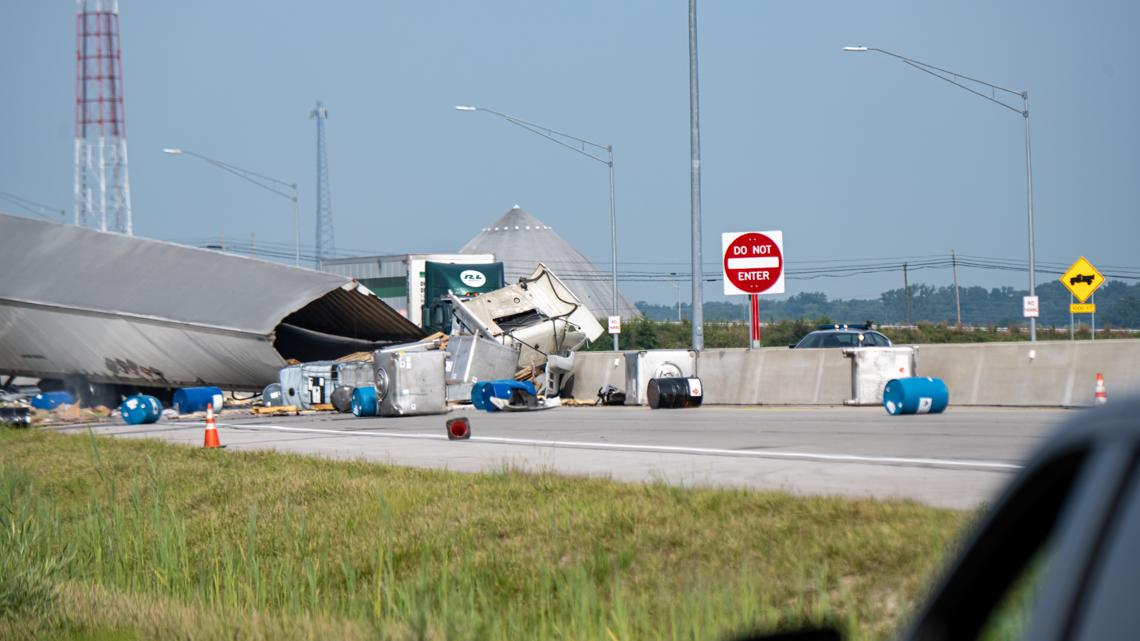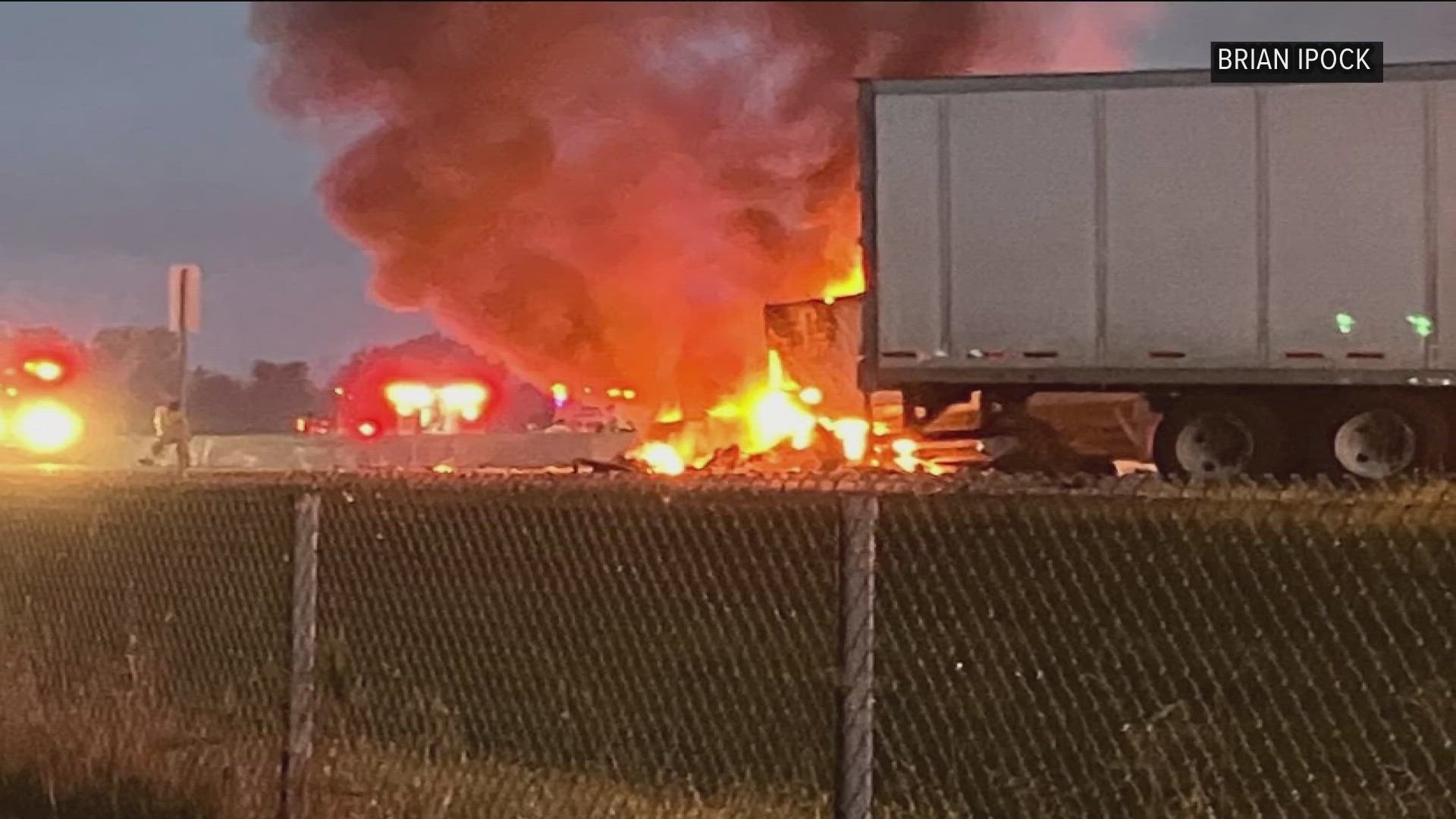TOLEDO, Ohio — Four people were killed Thursday morning when, within about an hour, three separate crashes involving 12 total vehicles occurred. One of these vehicles was carrying sulfuric acid, an extremely hazardous material. According to the Ohio State Highway Patrol, multiple first responders were evaluated for exposure to this material.
Here's a breakdown of the uses, hazards and regulations around sulfuric acid.
Sulfuric acid, also sometimes called battery acid, is a colorless, clear and oily liquid, according to the Center for Disease Control. It has a pungent odor and, when it comes into contact with certain materials and other chemicals, it can catch fire.
According to the state of Ohio, sulfuric acid is an extremely hazardous substance. When in contact with skin, it can cause severe chemical burns since it quickly decomposes proteins and lipids found in tissue. If it comes into contact with eyes, it can cause blindness, and if injested, it will likely corrode your esophogous.
Emergency crews who responded to Thursday's crash were seen wearing hazmat suits. A 150-foot perimeter was constructed around the site of the spill as a precautionary measure, the Ohio State Highway Patrol said.


Sulfuric acid is frequently transported due it its ample industrial uses. The CDC said the chemical is used in the manufacture of fertilizers, explosives, other acids and glue, and is also used in the purification of petroleum. It is produced more than any other chemical in the United States.


Carriers who transport hazardous materials are required to register with certain state and/or federal agencies, depending on the type of transportation they are conducting. When the material is transported in certain amounts, drivers in Ohio must have placards on their vehicle indicating the presence of the materials.


Environmental emergencies such as chemical spills should be rpeorted to the Ohio Environmental Protection Agency at their 24-hour hotline. The hotline can be contacted at 1-800-282-9378 or 614-224-0946. The Ohio EPA's Emergency Response team can respond 24-hours a day, seven days a week.
According to a safety data sheet from chemical company El Dorado, methods for cleaning up an accidental release of sulfuric acid includes the use of dikes or absorbnats to prevent the chemical from entering sewers or streams. The acid should then be neutralized.
All cleanup crew would be equipped with the proper protection during this process. This includes chemically resistant materials and fabrics, corrosion-proof clothing, gloves, respiratory protection and more.
WATCH MORE

